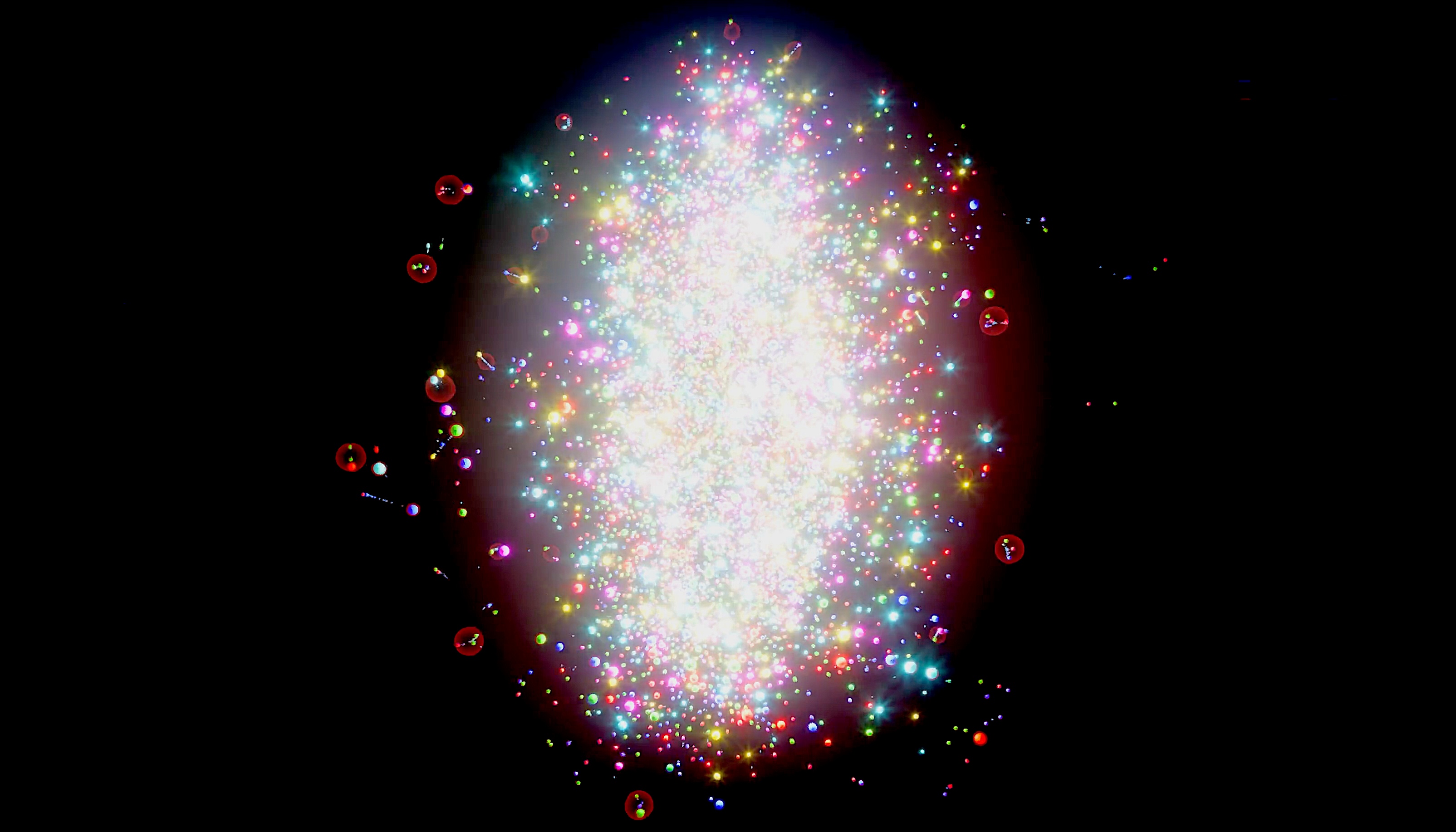Noble nuclei open new doors in ATLAS physics
31 October 2017 | By

Take something you think you understand, change it and see what happens. Earlier this month, the ATLAS Experiment put this basic scientific principle to the test during the first Large Hadron Collider (LHC) xenon run.
Xenon is a noble gas, with atoms consisting of 54 protons and between 70 and 80 neutrons. While massive compared to a proton, xenon nuclei are smaller than the lead ions typically collided in the LHC (129 nucleons compared to 208 nucleons). It was this intermediate size that piqued the interest of the ATLAS heavy ion team.
“We’ve been excited about a LHC xenon run since last fall, when it came up as a possibility based on the SPS heavy ion programme,” says Peter Steinberg, ATLAS Heavy Ion Physics Group convenor. “It was an opportunity for us to gain experience with a small system at high-energy.”
The shape of things
Not too big, not too small – xenon’s size allowed physicists to study an important parameter: collision geometry.
A collision’s size and shape can have a profound impact on the physics being studied with heavy ions. As xenon ions are markedly smaller than lead ions, their collisions naturally take a very different shape. “ATLAS can see the minutiae of a heavy ion collision, including the way the nuclei overlap and fluctuations in the positions of individual nucleons,” says Steinberg. “So, when the overall size of the collision event is smaller – with greater distances between the colliding nucleons – we are expecting to see very different features.”
How does geometry affect phenomena such as jet quenching? Or the “flow” of particles that do not interact? With its first xenon data now in hand, ATLAS can begin to address these questions.
Not too big, not too small – xenon’s size allowed physicists to study an important parameter: collision geometry.
The few and the many
Certain measurements may be easier to perform with a xenon run compared to a lead run, as smaller system collisions produce fewer particles. In particular, those sensitive to the fluctuations in the underlying event – such as jet measurements – may benefit from colliding smaller systems.
Make a run for it
Once the xenon run began in earnest, ATLAS gathered five hours of collision data. Short, but extremely fruitful: “There were a number of advantages to running with smaller nuclei,” explains Steinberg. “First, as its charge is smaller, the nuclei do not repel each other as strongly. This allows the LHC operators to pack ions more closely together, thus increasing the luminosity.”
Furthermore, xenon beams enjoy a longer lifetime in the LHC. “One of the main challenges with heavy-ion beams is their tendency to ‘burn off’ due to electromagnetic interactions between the nucleons,” continues Steinberg. “Xenon nuclei have far fewer of these sub-collisions, allowing them to remain in the machine longer.”
Xenon collisions raise an important point about the effectiveness of a run. Producing interesting collision events depends on two factors: the number of nucleons and luminosity. While xenon collisions decrease the former, they increase the latter. “There is a certain trade-off with smaller systems, but it is one that might lead to more interesting events,” concludes Steinberg. “At this point, we are learning what these systems will teach us, but the possibilities are exciting.”
Find out more:
- Explore more news pieces and physics briefings about the ATLAS heavy ion results.
- Xenon in the SPS: First tests for a photon factory, CERN News, 27 October 2017
- For one day only LHC collides xenon beams, CERN News, 12 October 2017


